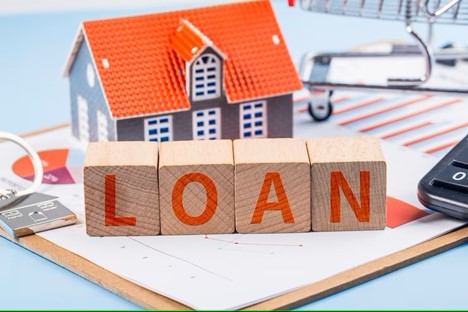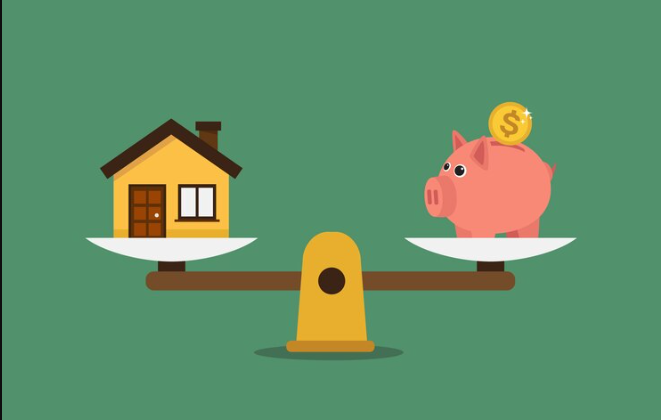A Guide to SMSF Home Loans | Complete Guide
Imagine your retirement savings not just sitting there. But actively growing and building your dream future. That’s the magic of Self-Managed Super Funds (SMSF).
Understanding SMSF home loans is important to make the most of it. In this guide, we’re here to simplify the process, answer questions, and show you the ropes in the easiest way possible.
What is an SMSF Home Loan?
An SMSF home loan is a tool for your retirement savings. It’s a special kind of loan that your retirement fund (SMSF) can use to buy a property for investment.
The money the property makes. Either from selling it for more or getting rent, goes back into your super fund for when you retire.
Now, what’s an SMSF?
It’s like a money manager for your retirement savings. You can have up to four people in it. But usually, it’s a husband and wife.
Someone called a trustee, is in charge of handling the fund. They decide how to invest the money. And make sure everything follows the rules. The trustee can be a company, with the same directors as the members, or just the members themselves.
Why is this important?
The trust structure acts like a shield. It keeps your SMSF’s assets safe from you (until you retire). And also protects your retirement savings from any pesky money-hungry creditors trying to get their hands on your hard-earned cash.
It’s your financial safety net. It’s a way to keep your retirement money safe and growing.
What is SMSF Lending?

SMSF lending is getting a loan for a specific purpose. Investing in things like property.
Here’s the deal. You borrow money, and the loan is tied to whatever you’re buying, like a house. Your SMSF (that’s your retirement savings manager) has to pay back the loan with some extra money called interest.
SMSF loans play by the rules set by the Australian Taxation Office (ATO) for self-managed super funds. Everything is legal and follows the plan for your retirement savings.
These loans are useful if you want to invest in real estate that fits your retirement strategy. It helps you grow your savings smartly.
Why Are SMSF Home Loans & Traditional Home Loans Different?
SMSF home loans work differently than traditional home loans.
SMSF home loans use a Limited Recourse Borrowing Arrangement (LRBA). This means a separate trust and trustee (a custodian) are set up to limit the lender’s recourse.
Why LRBA?
LRBAs are a special set of rules that lets SMSFs borrow for investments. It’s the only way you can take a loan within your fund.
To break it down further.
Assets purchased via SMSF loan under LRBAs protect other assets in the fund.
So, if your SMSF can’t repay the loan and falls behind. The lender goes after other assets to recover the loan. However, since the property is in a different trust. The lender can’t touch assets within your SMSF. This shields your other assets from being taken by the lender if things go south i.e., when you cannot repay the loan.
Before going into an LRBA and getting tax return Perth benefits. Your SMSF must stick to the ‘sole purpose’ test. Check if the asset you’re buying fits the sole purpose test. Whether your SMSF can handle interest rate hikes. And if the loan can be transferred or sold to another party.
Besides buying property. You can use borrowed cash from LRBA for repairs to improve a property owned by your SMSF.
Requirements for SMSF Home Loans
If you’re eyeing property with your SMSF. There are some must-follow rules:
- No Living In It: The trustee or anyone linked to the trustee can’t live in the property bought through the SMSF.
- No Renting It Out: The property purchased through the SMSF can’t be rented by the trustee or anyone related to the trustee.
- No Buying From Trustees: Your SMSF can’t buy a property owned by any of its trustees or anyone closely related to it.
- Retirement Benefits Only: The property purchase must strictly aim to provide retirement benefits to your SMSF members, meeting the ‘sole purpose test.
And here’s a bonus info! An SMSF can have up to 6 members. And each member must also be a trustee. That means every trustee has an equal say in decisions and keeping the fund in line with the law.
SMSF Home Loan Restrictions
- No Property Upgrades: You can’t use SMSF funds for upgrades to make your property upmarket with things like add-ons, granny flats, or extensions.
- Maintenance is Permitted: While you can’t use SMSF funds for major upgrades. Borrowing for renovations to improve a property is generally allowed.
Can I Build A House with SMSF Loan?
No, you can’t build a new house on vacant land with an SMSF loan. Under an LRBA, you’re only allowed to buy a ‘single acquirable asset’ or one title.
Getting a loan for your SMSF is a complex than a regular mortgage. SMSF loan can only be done under a Limited Recourse Borrowing Arrangement (LRBA).
Therefore, your SMSF loan can only buy you property. Either residential or commercial
How Much Can An SMSF Borrow?

Not many banks offer SMSF loans because they can be tricky. But the following are the SMSF loan borrowing limits.
- Residential Property Buying
- Your SMSF Loan Limit: Up to 80% LVR.
- Deposit Needed: You need to put down at least 20% as a deposit.
- Commercial Property Buying
- Your SMSF Loan Limit: Up to 70% LVR.
- Deposit Needed: You need to put down a minimum 30% deposit.
In simple terms. If you’re after a home i.e., residential property, you typically need a 20% deposit. But if it’s a business property or business advice, you typically need around a 30% deposit. Easy enough!
LVR (Loan-to-Value Ratio): It’s the percentage of the property’s value that you can borrow. For example, an 80% LVR means you can borrow 80% of the property’s value and need to provide a 20% deposit.
Benefits of SMSF Home Loans

- Control Over Investments: You have more say in your investments. Like choosing properties that fit your retirement plans.
- Tax Gains: Buying property through an SMSF can bring tax return Perth benefits. Like deducting loan interest and capital gains tax breaks in retirement.
- Diversification: Investing in property via an SMSF helps spread financial risk across different types of investments.
Risks of SMSF Home Loans
- Limited Liquidity: Property investments can be slow to sell. This makes it tough to access funds in emergencies.
- Loan Repayment Risks: SMSF loans face interest rates and market changes. A solid repayment plan is important to handle repayment risks.
- Compliance Responsibilities: SMSFs must follow strict rules. Ignoring these rules can result in penalties. The SMSF trustee could face fines of up to $200,000.
Why Interest Rates Are Higher For SMSF Loans?

When you check out the SMSF loan interest versus traditional home loans. SMSF rates will always be higher. So,
- Why are SMSF loans more expensive?
- Why are SMSF loan interest rates higher than traditional home loans?
- Why are there so few banks that will lend money to SMSFs?
There is a single answer to all the above questions.
Because limited recourse borrowing for SMSF loans is riskier for the lender (loan provider). This risk margin can change a lot. Especially if it’s for a house or a business property.
Here’s the deal. SMSF property is not so easy to sell, unlike shares. And selling it or getting all the money from it isn’t straightforward.
So, to balance this risk. The loan interest rates for SMSF are higher. It’s because property is seen as risky. Making it harder to get to your cash.
And that can mess with the sole purpose test, risking your fund. Hence, only a select few second-tier lenders (loan providers) give SMSF loans.
Who Is Eligible for an SMSF Home Loan?

Ready to explore an SMSF home loan? Let’s break down who fits the bill:
1. Setting Up SMSF
Make sure your SMSF aligns with ATO rules. All members should be trustees and above 18.
2. Eligibility Checklist
Duration: Your SMSF should stand strong for at least 2 years.
Minimum Balance: Maintain a minimum balance of $50,000.
Repayment Ability: Your SMSF needs a robust investment plan and financial capacity for repayments.
3. Investment Suitability
Your chosen asset must be suitable for SMSF investment. And the loan must be linked to it.
4. Lender/Loan Provider Conditions
Lenders can list additional requirements. Keep in mind, that the ATO supervises SMSF lending closely. And not everyone qualifies.
Different Types of SMSF Home Loans
Do SMSF loans offer fixed and variable rates? It depends on the lender. SMSF home loans can be offered as either fixed or variable rate options.
Here are the different types of SMSF home loans:
| SMSF Loan Type | Key Feature |
| Variable Rate Loan | Interest changes with the market, making repayments flexible. |
| Fixed Rate Loan | Interest rate is fixed for a set period. It provides payment certainty. |
| Combination Loan | Split your loan. A combination of a fixed rate and variable rate. part |
How Do I Apply for SMSF Loan?
Are you thinking of applying for an SMSF Loan? Then start smart!
Talk to the Pros:
First things first, connect with a mortgage broker or loan specialist. They’re the experts who can steer you in the right direction.
Connect with Us:
Feeling overwhelmed about self-managed super funds? No worries! Reach out to Personal Tax Accountant Perth for personalized advice on SMSF loans.
At Tax Accounting Australia, we’re here to offer top-notch service and guide you through the ins and outs of securing SMSF loans.

